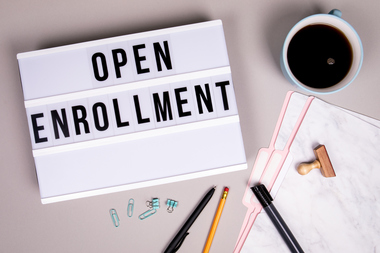In October 2021, Bloomberg Law reported, “Covid-19 is upending employers’ open enrollment as benefits plan advisers struggle to communicate with their workers about changes to their fringe compensation.”
Additionally, COVID-19 has pushed more employers to conduct open enrollment remotely. Note that prior to COVID-19, many on-site and remote employers had already adopted virtual open enrollment processes. COVID-19 simply accelerated this shift.
Performing open enrollment remotely is a huge time saver for both employers and employees. But to be successful, it needs to be done properly. Below are four things to keep in mind when doing open enrollment remotely.
employees. But to be successful, it needs to be done properly. Below are four things to keep in mind when doing open enrollment remotely.
1. Create a schedule of key open enrollment dates
This includes:
- The starting and ending dates for open enrollment season at your company. Although these dates vary by employer, many companies hold open enrollment between late November and early December. Oftentimes, the process lasts two to four weeks.
- The deadlines for enrolling in individual coverage on the federal or state health insurance marketplace. This is for people who do not have employer-sponsored health insurance coverage.
- When to communicate open enrollment information to employees, such as dates for making announcements, sending reminders and distributing open enrollment packages.
2. Improve on the previous year
COVID-19 has caused employers to implement more remote offerings — such as telemedicine, virtual benefits fairs and mobile apps for benefits enrollment. For many employers, these offerings are here to stay. For others, changes may be in order.
Prior to launching your next open enrollment, examine last season’s experiences and offerings and then determine what needs to be adjusted and improved.
3. Leverage the appropriate remote communication channels
The goal is to effectively convey the necessary open enrollment information to all employees. Depending on your employees’ needs and preferences, you can communicate with them remotely via:
- Email.
- Company website.
- Video.
- Text messaging.
- Instant messaging.
- Mobile applications.
- Chatbots.
- Company social media pages.
- Digital benefits documents (e.g., flyers, guides, Q&As).
The ideal communication channels will also depend on the type of message being sent.
4. Give remote employees more time to make open enrollment decisions
According to a Society for Human Resource Management article, “Remote workers may need more time and opportunity to gather and consider information before making enrollment decisions.”
These employees aren’t in a brick-and-mortar setting and may feel disconnected from the open enrollment process as a result. So it’s important to make them feel as included as possible. For example, you can expand the number of virtual meetings and Q&A sessions for remote employees. You may also offer a longer open enrollment window, such as 60 days instead of 30 days.
Conducting open enrollment remotely has its share of challenges. For best results, work closely with your benefits team, including your broker and service providers.
buying androxal cost insurance
purchase androxal cheap store